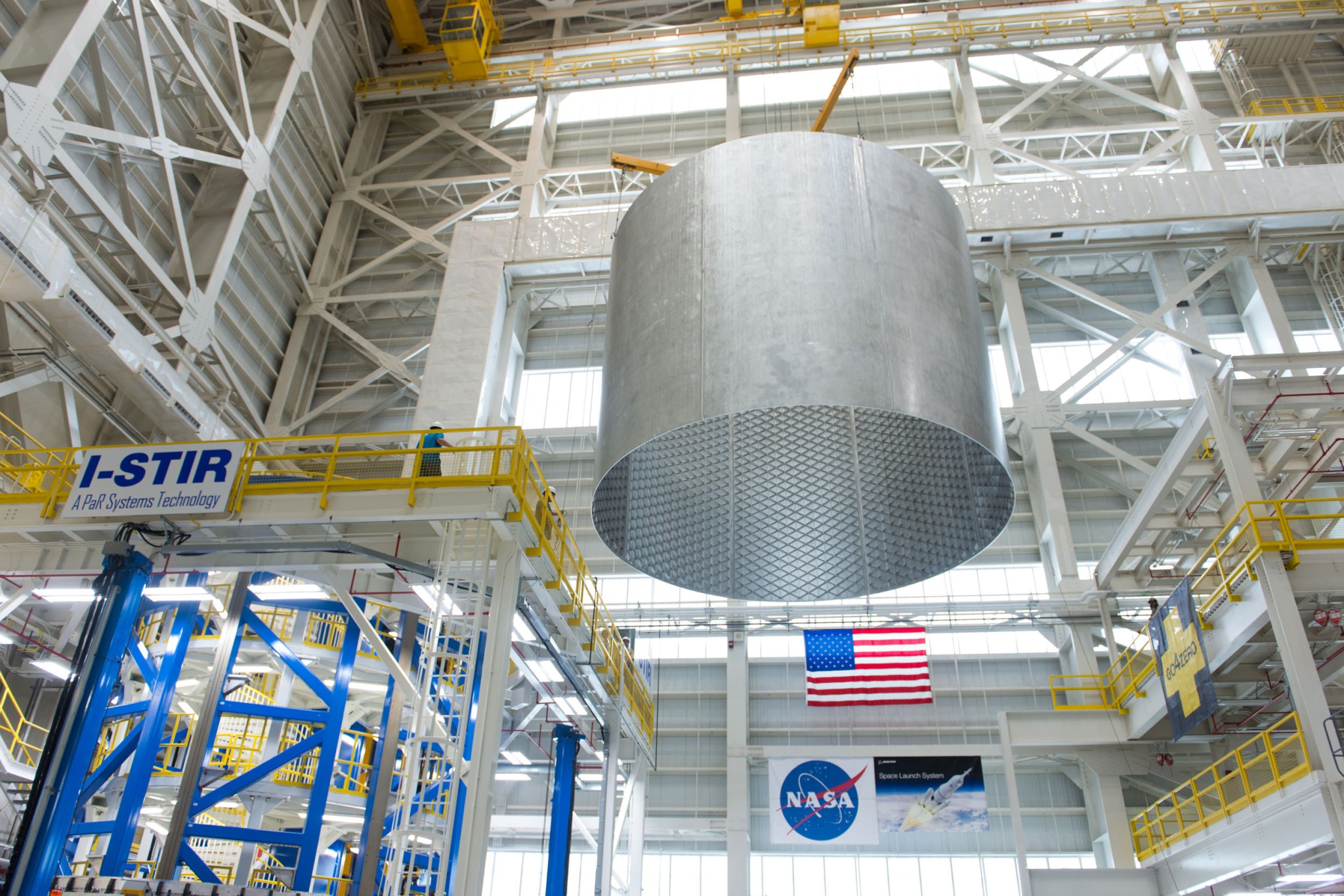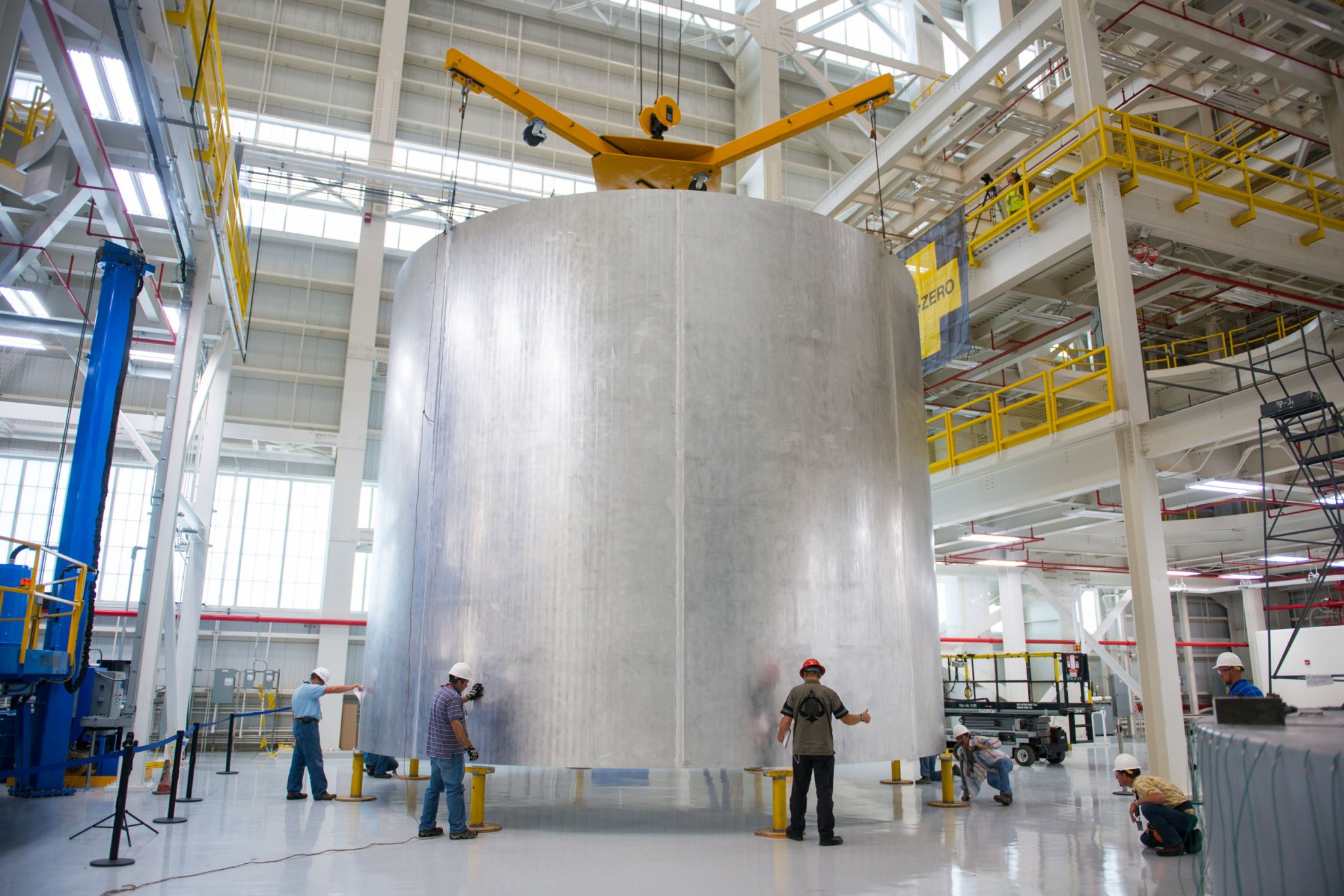The first liquid hydrogen tank barrel segment for the core stage of NASA’s new heavy-lift launch vehicle, the Space Launch System (SLS), recently was completed at the agency’s Michoud Assembly Facility in New Orleans.
The segment is considered a “confidence” barrel segment because it validates the vertical weld center is working the way it should. The vertical weld center is a friction-stir-weld tool for wet and dry structures on the SLS core stage.
Friction stir welding uses frictional heating, combined with forging pressure, to produce high-strength bonds virtually free of defects. The welding process transforms metals from a solid state into a “plastic-like” state and uses a rotating pin tool to soften, stir and forge a bond between two metal plates to form a uniform welded joint — a vital requirement of next-generation space hardware.
The vertical weld center, completed in June, is welding barrel panels together to produce whole barrels for the core stage’s two pressurized tanks, the forward skirt and the aft engine section. The vertical weld center stands about three stories tall and weighs 150 tons.
The finished barrel segment stands at 22 feet tall, weighs 9,100 pounds and is made of Al 2219, an aerospace aluminum alloy. The segment will be used in structural tests to ensure the integrity of the piece. “This barrel section was welded as part of a plan to demonstrate new weld tool manufacturing capabilities and will be used for futher production tool confidence welding activities,” said Steve Holmes, manufacturing lead in the Stages Office at NASA’s Marshall Space Flight Center in Huntsville, Ala. “The first fully welded barrel segments are extremely important to test tools and manufacturing processes prior to start of qualification hardware and first-flight articles.”
Five similar barrels and two end domes will be constructed to make up the SLS core stage liquid hydrogen tank. The core stage will be more than 200 feet tall with a diameter of 27.6 feet, and it will store cryogenic liquid hydrogen and liquid oxygen that will feed the vehicle’s RS-25 engines.
NASA and The Boeing Company engineers have been conducting friction-stir-welding tests at Michoud to ensure quality and safety of flight hardware. Boeing is the prime contractor for the SLS core stage, including its avionics. Marshall manages the SLS Program for the agency.
Watch a video of the barrel completion:


























